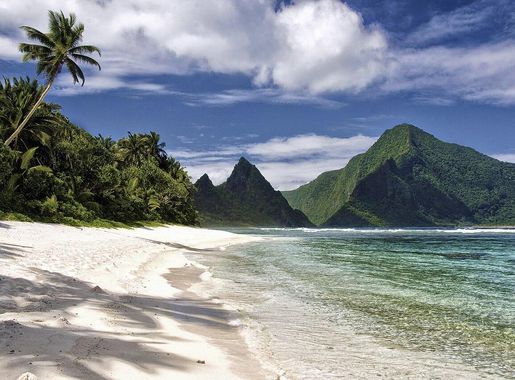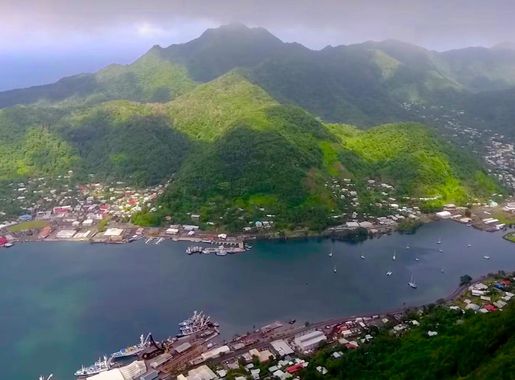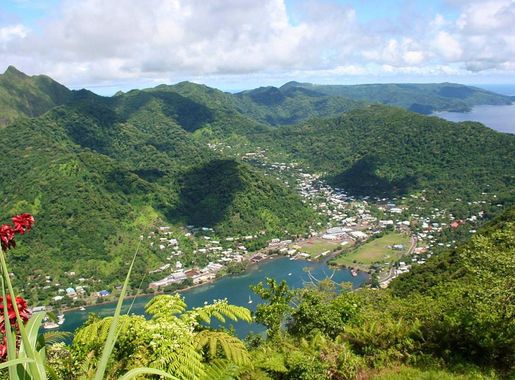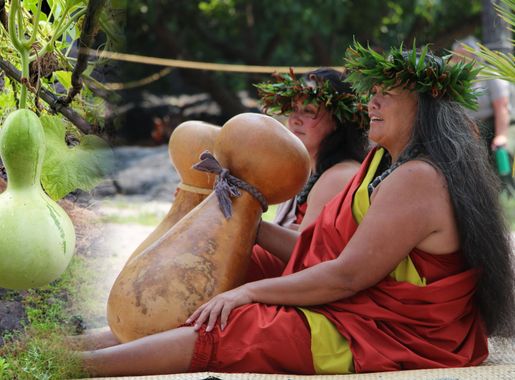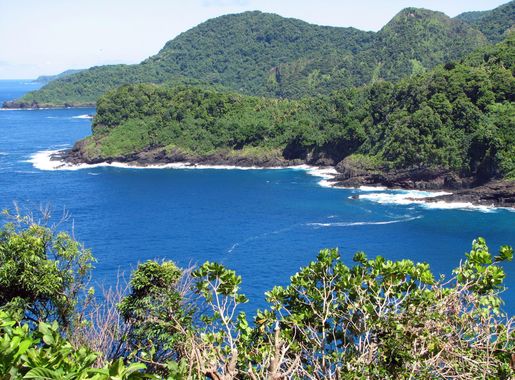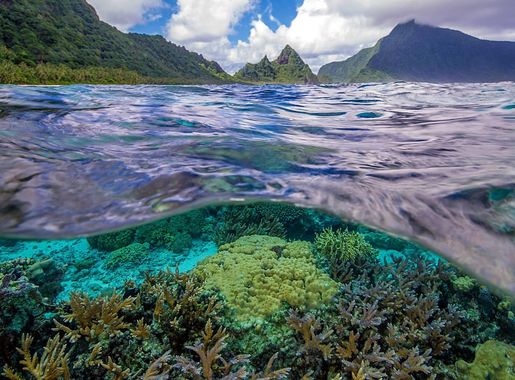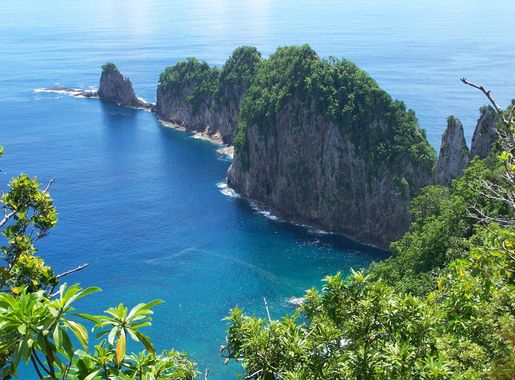
National Park of American Samoa: A Tropical Paradise Awaiting Discovery
Discover the National Park of American Samoa: A tropical paradise with stunning coral reefs, lush rainforests, and a unique cultural heritage on the South Pacific islands.
The National Park of American Samoa is a hidden gem in the heart of the South Pacific. This tropical paradise spans three islands: Tutuila, Ofu, and Ta‘ū. The park is renowned for its stunning coral reefs, lush rainforests, and unique Samoan culture. Visitors can explore breathtaking landscapes, from towering volcanic peaks to pristine beaches, all teeming with vibrant wildlife. The park is a sanctuary for many rare species, including the Pacific fruit bat and the endangered sea turtle. Bird enthusiasts will delight in spotting tropical birds like the wattled honeyeater and the white tern. The marine biodiversity is equally impressive, with colorful coral gardens and abundant fish species. Snorkeling and diving here are unforgettable experiences. Cultural immersion is a key aspect of the park. Visitors can learn about the Samoan way of life, or fa‘a Samoa, by visiting local villages. Here, you can witness traditional Samoan crafts, dance, and cooking. The hospitality of the Samoan people is legendary, and their stories of the islands' history and legends add a rich layer to your visit. Whether you're an adventurer seeking hiking trails with panoramic vistas or a relaxation enthusiast looking for tranquil beaches, the National Park of American Samoa offers something for everyone. This destination combines natural beauty, cultural richness, and a sense of tranquility that is hard to find elsewhere.
Local tips in National Park of American Samoa
- Visit between June and September for the best weather and calmer seas.
- Bring reef-safe sunscreen to protect the delicate marine ecosystem.
- Wear sturdy hiking shoes for exploring the park’s rugged terrain.
- Try local Samoan dishes like oka (raw fish salad) and panikeke (Samoan pancakes).
- Respect local customs and traditions, especially when visiting villages.
- Arrange for a local guide to enhance your cultural and natural experience.
National Park of American Samoa: A Tropical Paradise Awaiting Discovery
The National Park of American Samoa is a hidden gem in the heart of the South Pacific. This tropical paradise spans three islands: Tutuila, Ofu, and Ta‘ū. The park is renowned for its stunning coral reefs, lush rainforests, and unique Samoan culture. Visitors can explore breathtaking landscapes, from towering volcanic peaks to pristine beaches, all teeming with vibrant wildlife. The park is a sanctuary for many rare species, including the Pacific fruit bat and the endangered sea turtle. Bird enthusiasts will delight in spotting tropical birds like the wattled honeyeater and the white tern. The marine biodiversity is equally impressive, with colorful coral gardens and abundant fish species. Snorkeling and diving here are unforgettable experiences. Cultural immersion is a key aspect of the park. Visitors can learn about the Samoan way of life, or fa‘a Samoa, by visiting local villages. Here, you can witness traditional Samoan crafts, dance, and cooking. The hospitality of the Samoan people is legendary, and their stories of the islands' history and legends add a rich layer to your visit. Whether you're an adventurer seeking hiking trails with panoramic vistas or a relaxation enthusiast looking for tranquil beaches, the National Park of American Samoa offers something for everyone. This destination combines natural beauty, cultural richness, and a sense of tranquility that is hard to find elsewhere.
When is the best time to go to National Park of American Samoa?
Iconic landmarks you can’t miss
O Le Pupu-Pue National Park
Experience the striking landscapes and rich biodiversity of O Le Pupu-Pue National Park, a must-visit destination for nature lovers in Samoa.
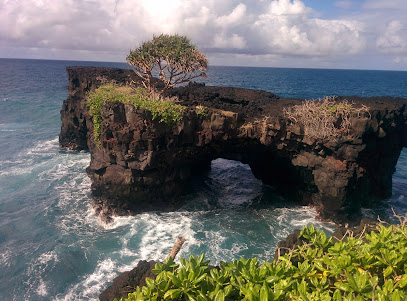
National Park of American Samoa Visitor Center
Explore the cultural and ecological treasures of the National Park of American Samoa at the Visitor Center in Fagatogo, a true gateway to paradise.
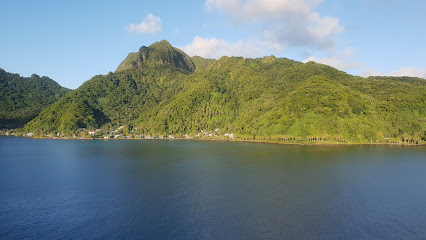
American Samoa Visitors Bureau (ASVB)
Explore the beauty of American Samoa with personalized guidance at the American Samoa Visitors Bureau, your essential travel resource.
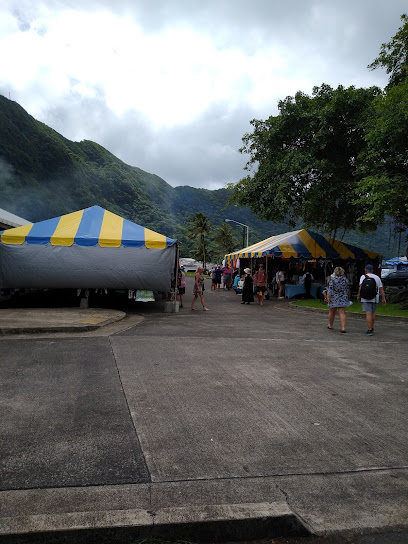
Jean P Haydon Museum
Experience the cultural richness of American Samoa at the Jean P Haydon Museum, where history and heritage come alive in every exhibit.
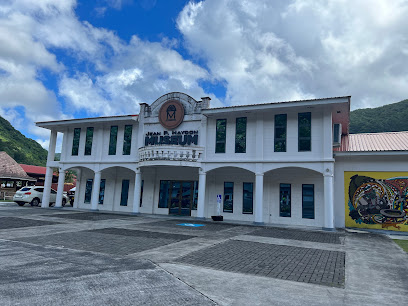
Two Dollar Beach
Experience the unmatched beauty and tranquility of Two Dollar Beach in Avaio's Eastern District, a must-visit destination for nature lovers and beach enthusiasts.
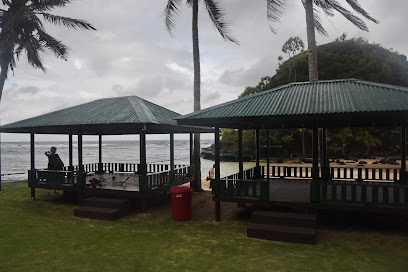
Blunts Point Battery
Explore the historic Blunts Point Battery, a WWII monument in beautiful Utulei, offering stunning ocean views and a scenic hiking experience.
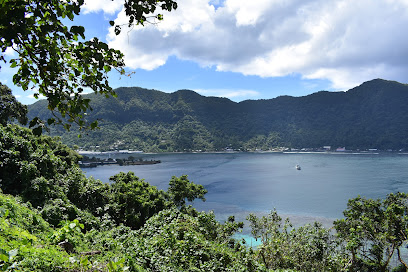
Tau
Experience the serene beauty and cultural richness of Tau Island, a hidden paradise in American Samoa with stunning landscapes and vibrant marine life.

Vai'ava Strait National Natural Landmark
Discover the untouched beauty of Vai'ava Strait National Natural Landmark, where crystal-clear waters meet lush landscapes in American Samoa.
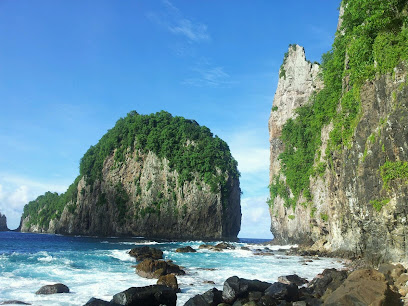
Turtle and Shark
Experience the serene beauty of Turtle and Shark, a breathtaking scenic spot in Vaitogi, Western District, perfect for nature lovers and tranquil escapes.
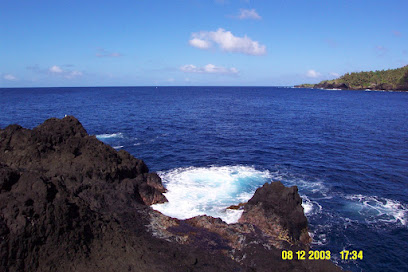
Fogamaa Crater National Natural Landmark
Discover the stunning landscapes and rich biodiversity of Fogamaa Crater National Natural Landmark in Vaitogi, a must-visit destination in American Samoa.
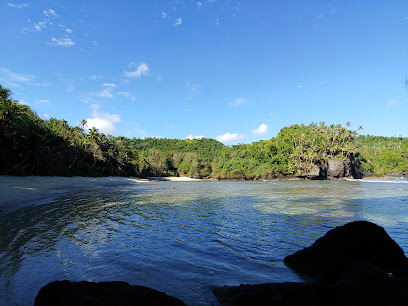
Tauese P. F. Sunia Ocean Center
Explore the Tauese P. F. Sunia Ocean Center for an unforgettable journey through the marine ecosystems of American Samoa, where education meets conservation.
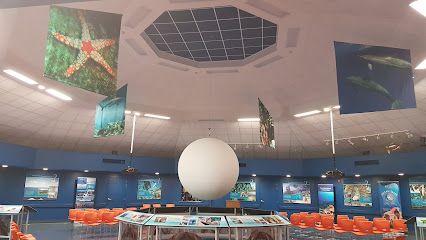
Blunts Point Trail
Experience the breathtaking scenery and serene atmosphere of Blunts Point Trail, a hidden gem in Utulei's Eastern District perfect for hiking and nature lovers.
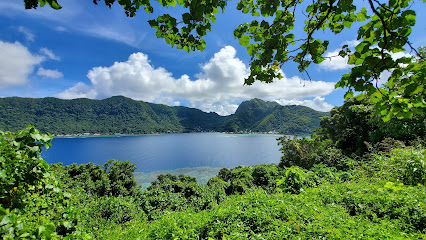
Tia Seu Lupe
Explore Tia Seu Lupe, a historical gem in Tafuna, Western District, offering rich heritage and stunning landscapes for all history enthusiasts.
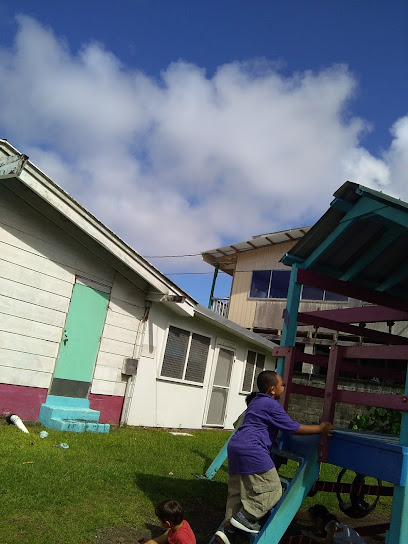
Ofu Beach
Discover the tranquil beauty of Ofu Beach in American Samoa, a stunning destination for relaxation, snorkeling, and unforgettable island experiences.
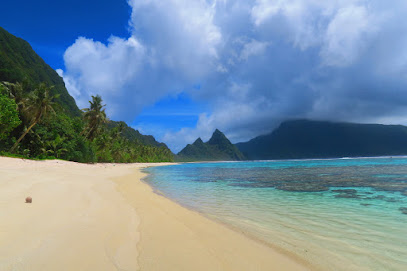
Fagatele Marine Sanctuary
Explore the vibrant marine life and stunning landscapes of Fagatele Marine Sanctuary, a hidden gem in American Samoa perfect for nature lovers and adventure seekers.
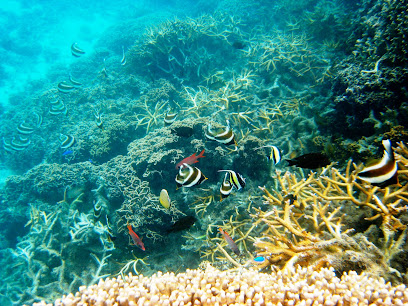
Essential places to dine
Sadie's by the Sea
Experience unparalleled comfort and authentic Samoan cuisine at Sadie's by the Sea in picturesque Pago Pago.

McDonald's
Discover global flavors at McDonald's Tafuna - your go-to fast food stop for comfort meals anytime.

Tisa's Barefoot Bar
Discover Tisa's Barefoot Bar: A serene dining experience with local flavors amidst stunning natural beauty in Alega.
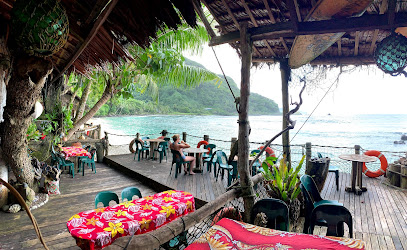
DDW Restaurant
Discover exquisite flavors at DDW Restaurant in Utulei - where local ingredients meet culinary creativity.
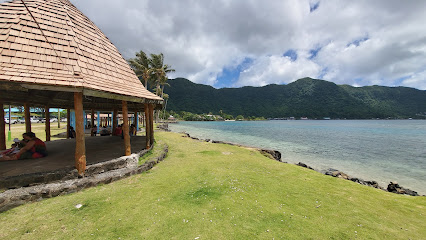
The Koko Bean Cafe
Experience the vibrant flavors of Samoa at The Koko Bean Cafe - where local ingredients meet culinary creativity.
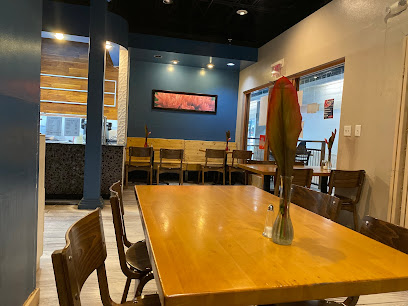
Cecilias Restaurant & Bar
Experience the vibrant flavors of American Samoa at Cecilia's Restaurant & Bar - where every meal tells a story.
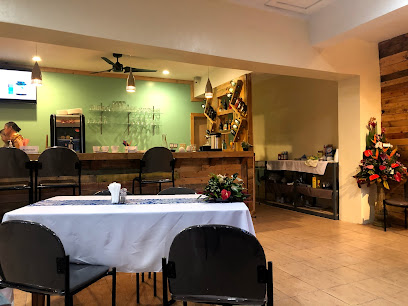
Paradise Pizza
Discover mouthwatering pizzas at Paradise Pizza in Pago Pago - where local flavors meet culinary excellence!
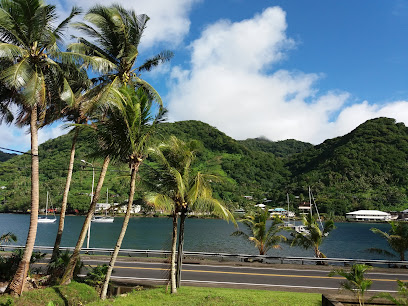
Milovales Burgers and Fish & Chips
Experience delicious fast food at Milovales Burgers and Fish & Chips - A must-visit destination in Nu'uuli for tasty burgers and crispy fish!
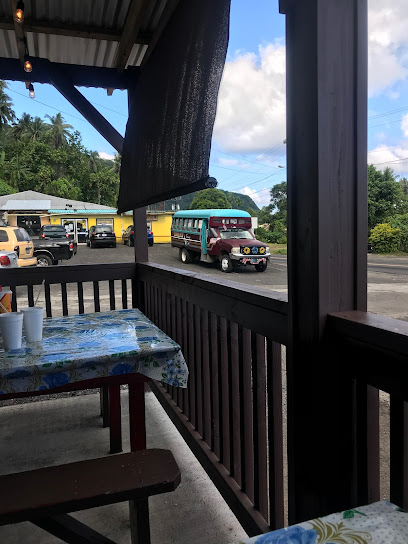
Tropical Chicken and Pizza
Discover the vibrant flavors of Tropical Chicken and Pizza in Pago Pago – where tropical tastes meet classic pizza perfection.
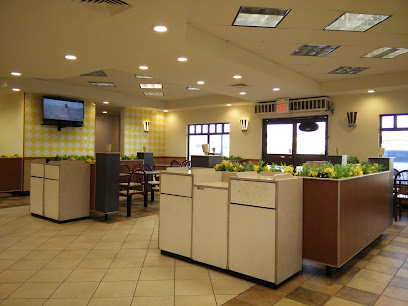
Oasis
Experience authentic Korean cuisine at Oasis in Tafuna - where every dish tells a story and every bite is an adventure.
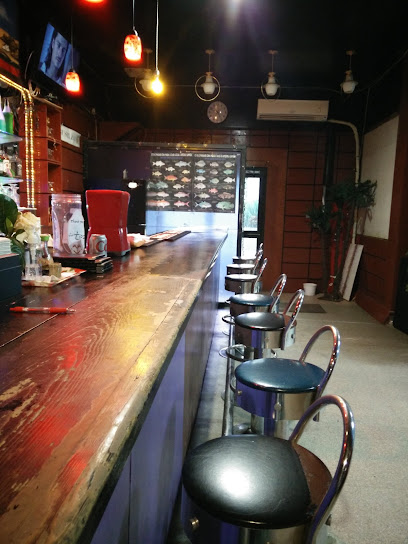
Dickies Diner
Experience authentic American comfort food at Dickies Diner in Tafuna – a must-visit fast-food gem in American Samoa.
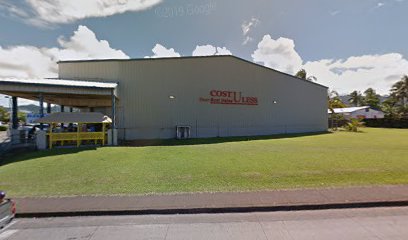
Manuia Restaurant
Experience authentic Korean flavors in Tafuna at Manuia Restaurant – where every dish tells a story.
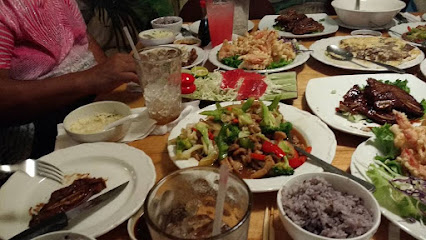
A&E Cafe
Discover A&E Cafe in Tafuna for an authentic taste of local cuisine amidst a warm and inviting atmosphere.
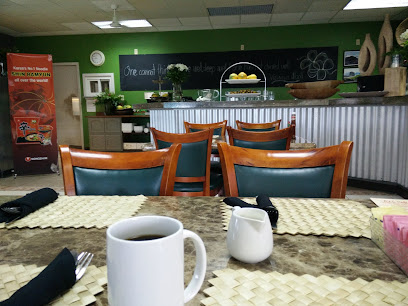
Goat Island Cafe
Discover authentic Samoan cuisine at Goat Island Cafe in Utulei - where every bite tells a story.
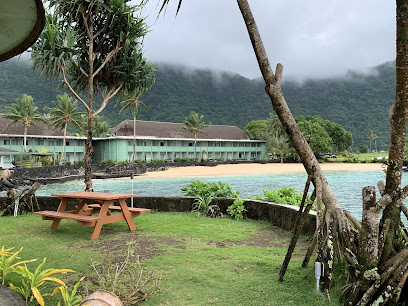
Emelio's Restaurant
Discover authentic Samoan cuisine at Emelio's Restaurant in Pago Pago - where local flavors come alive in every dish.
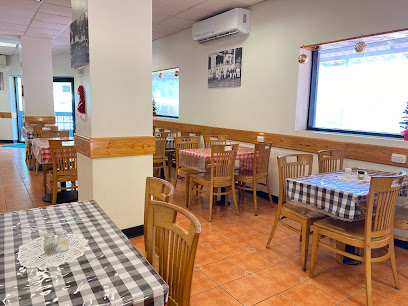
Markets, malls and hidden boutiques
Tradewinds Hotel
Discover the perfect blend of comfort and adventure at Tradewinds Hotel in Tafuna, American Samoa, where relaxation meets local charm.

KS Mart
Explore KS Mart in Tafuna – your go-to grocery store for local products and fresh ingredients in American Samoa.
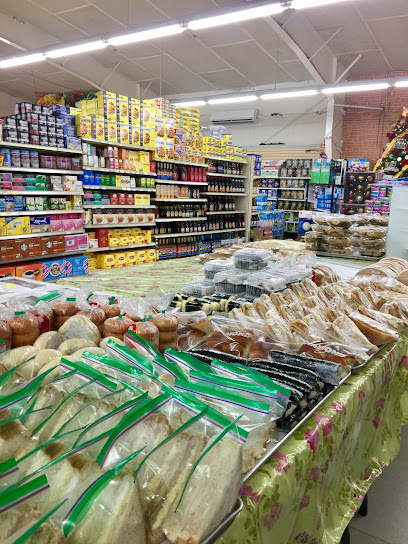
Laufou Shopping Center
Explore Laufou Shopping Center in Nu'uuli, a vibrant shopping destination featuring diverse shops, delicious dining, and a taste of local culture.
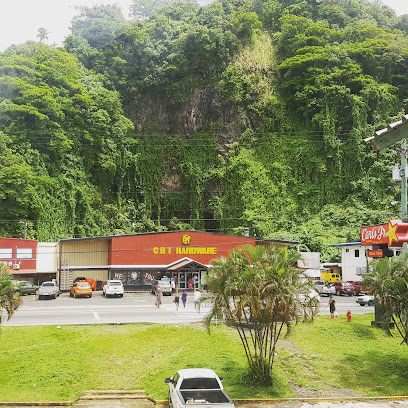
National Park of American Samoa
Explore the breathtaking landscapes and rich cultural heritage of the National Park of American Samoa, a unique tropical paradise in the South Pacific.
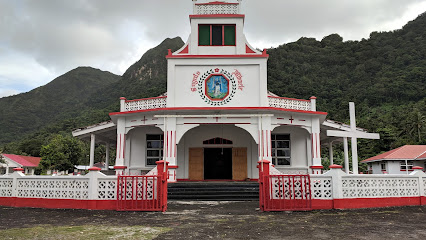
Cost.U.Less
Explore the vibrant Cost.U.Less grocery store in Pago Pago for a unique shopping experience filled with local flavors and international goods.
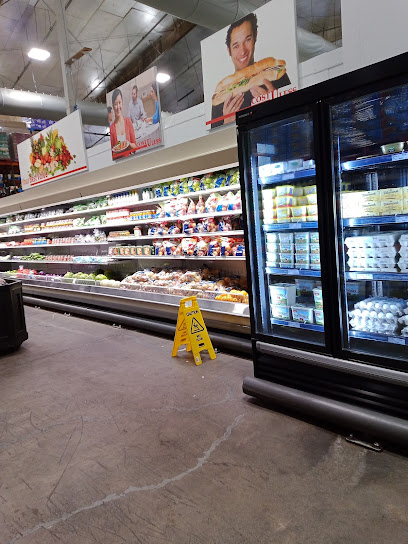
Pacific Jewell Gift Shop & Garden Café
Explore the rich culture of Samoa at Pacific Jewell Gift Shop & Garden Café, where local crafts and delicious flavors come together in a serene setting.
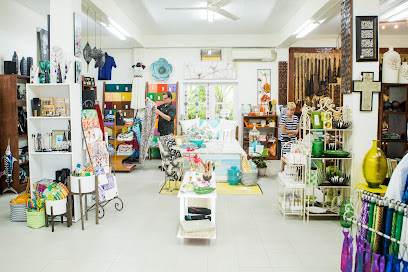
Tisa's Barefoot Bar
Experience the ultimate tropical escape at Tisa's Barefoot Bar, where delicious cuisine meets breathtaking ocean views in Alega.
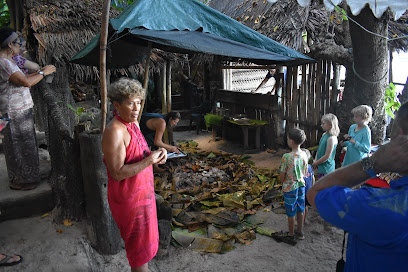
TSM Mart
Discover the flavors of Tafuna at TSM Mart, a local grocery store offering a diverse range of products from fresh produce to international delicacies.
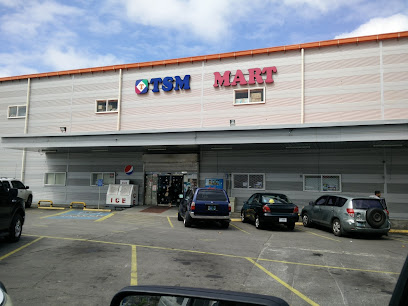
Pago Pago Harbour
Experience the breathtaking natural beauty and rich cultural heritage of Pago Pago Harbour, a hidden gem in American Samoa.
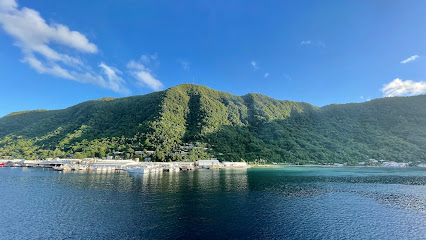
National Park of American Samoa Visitor Center
Experience the breathtaking beauty and rich culture of American Samoa at the National Park Visitor Center, your gateway to adventure.
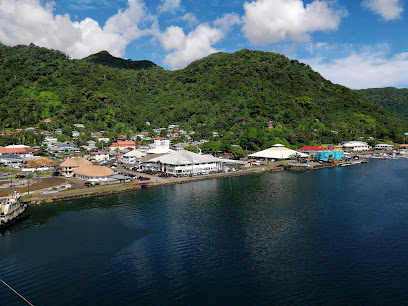
Janet's Samoa
Explore the vibrant culture of Samoa at Janet's Samoa, a unique gift shop offering authentic crafts and souvenirs in the heart of Apia.
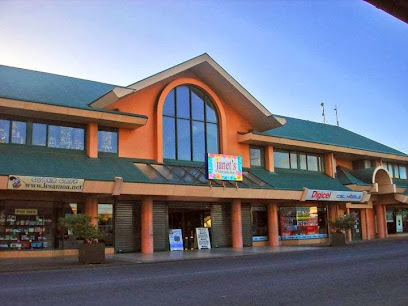
US AAFES American Samoa Post Exchange
Explore the vibrant US AAFES American Samoa Post Exchange for a unique shopping experience tailored for military families and tourists alike.
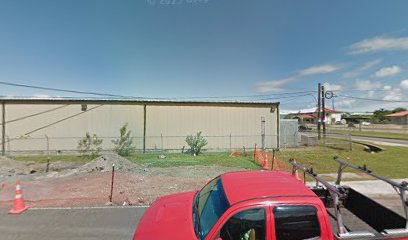
Manu'a Store
Explore Manu'a Store in Nu'uuli for an authentic shopping experience filled with local crafts and unique home goods that reflect Samoan culture.
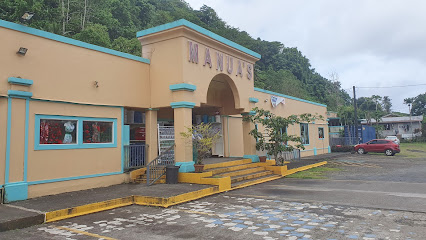
Fagatogo Square
Discover the vibrant shopping and dining scene at Fagatogo Square, the heart of the Eastern District's local culture and community.

Two Dollar Beach
Experience the tranquil beauty and adventure of Two Dollar Beach in Avaio, Eastern District, your perfect escape for relaxation and fun.
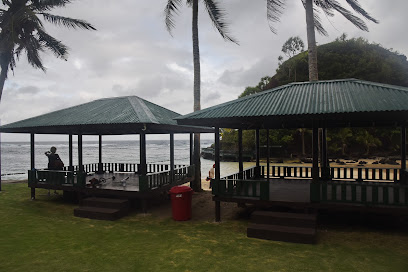
Essential bars & hidden hideouts
The Edge Marina, Samoa
Experience the vibrant atmosphere of The Edge Marina in Samoa, where exquisite food, delightful drinks, and stunning views await.
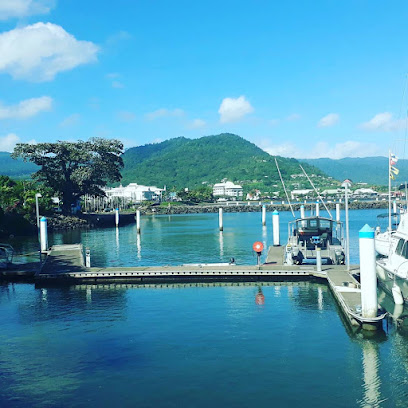
McDonald's
Experience fast food convenience and local flavors at McDonald's in Tafuna, the perfect pit stop for travelers seeking a quick and satisfying meal.
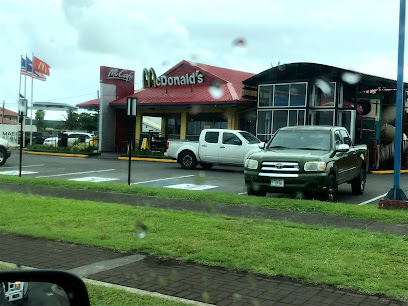
National Park of American Samoa
Explore the unique ecosystems and vibrant culture at the National Park of American Samoa, an unforgettable tropical paradise.
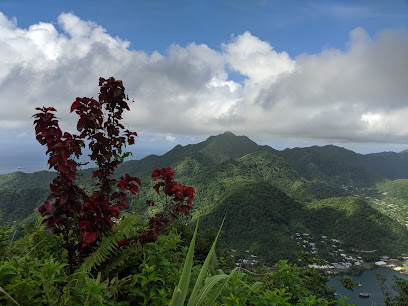
Tisa's Barefoot Bar
Experience the tropical charm of Tisa's Barefoot Bar in Alega, where delicious local cuisine meets stunning ocean views.
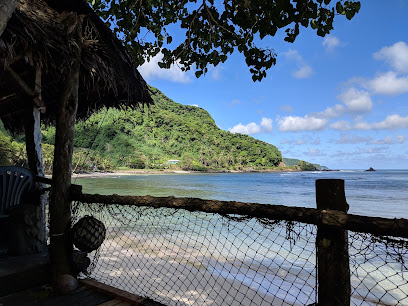
DDW Restaurant
Discover the flavors of the Eastern District at DDW Restaurant, where fresh seafood meets stunning ocean views in a relaxed atmosphere.
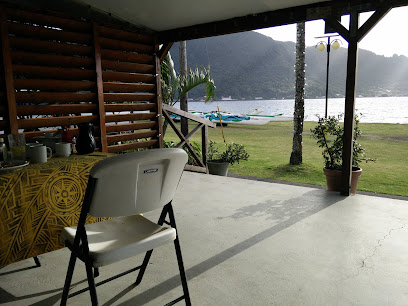
The Koko Bean Cafe
Experience the flavors of Nu'uuli at The Koko Bean Cafe, where local cuisine meets warm hospitality in a cozy setting.
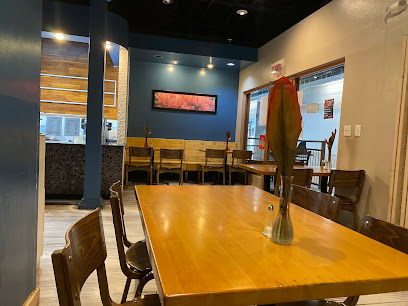
Cecilias Restaurant & Bar
Experience the authentic flavors of Samoa at Cecilia's Restaurant & Bar, where local cuisine meets a vibrant dining atmosphere.
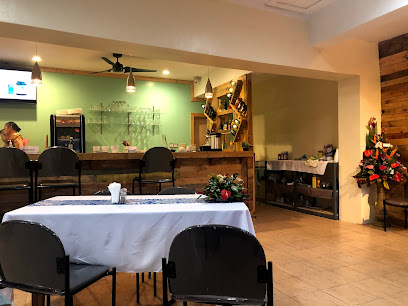
Paradise Pizza
Experience the best of local flavors at Paradise Pizza in Pago Pago, where delicious pizzas and a friendly atmosphere await.
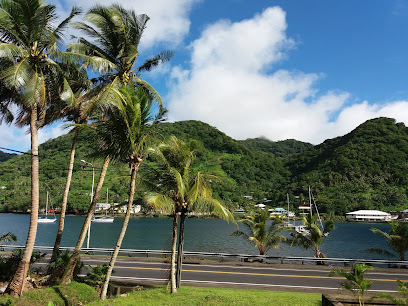
Milovales Burgers and Fish & Chips
Discover the best burgers and fish & chips in Nu'uuli at Milovales, a fast food gem that combines taste and local flair in American Samoa.
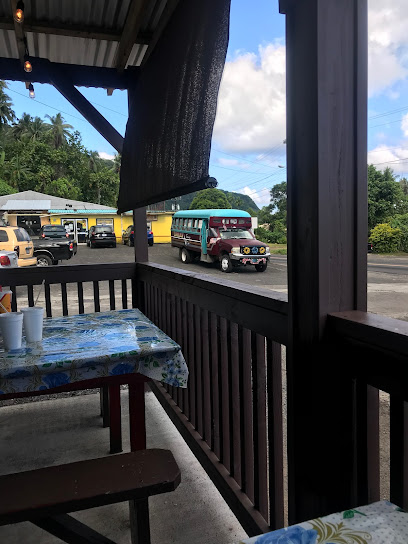
Oasis
Discover the essence of Korean cuisine at Oasis, a culinary gem in Tafuna with vibrant flavors and a welcoming atmosphere.
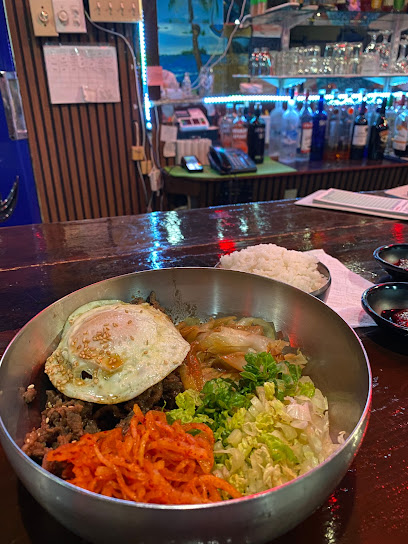
Flying Fox Gastropub
Discover the vibrant flavors of Pago Pago at Flying Fox Gastropub, a unique dining experience blending local and international cuisines.
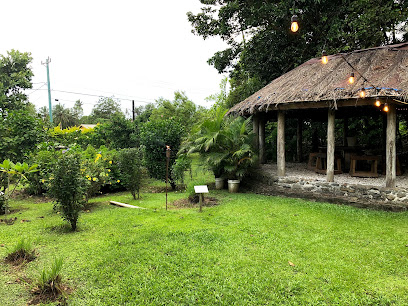
T J D - Pho Vietnamese Restaurant
Experience the authentic flavors of Vietnam at T J D - Pho Vietnamese Restaurant, where every dish tells a story of culinary tradition.
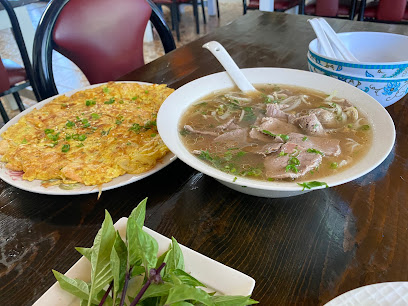
Paradise Bar & Grill
Savor the essence of Samoan hospitality at Paradise Bar & Grill, a vibrant spot for delicious food, refreshing drinks, and lively entertainment.
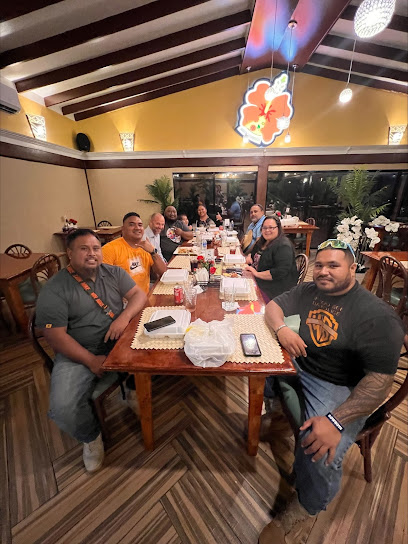
Manuia Restaurant
Experience the authentic taste of Korea at Manuia Restaurant in Tafuna, where every dish is a culinary journey.
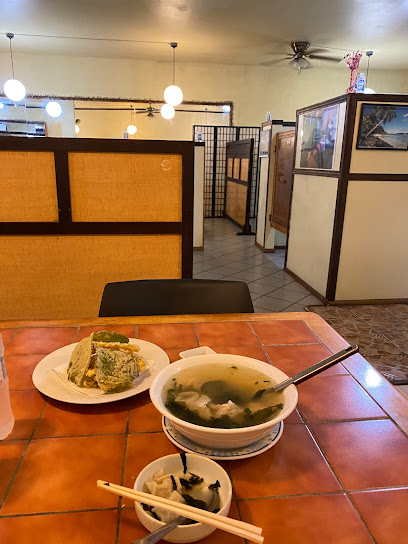
A&E Cafe
Discover authentic Samoan flavors at A&E Cafe in Tafuna, offering a cozy atmosphere perfect for breakfast and lunch.
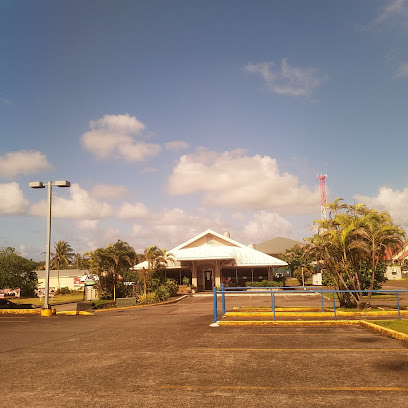
Local Phrases about National Park of American Samoa
-
- HelloTalofa
[Tah-loh-fah] - GoodbyeFa
[Fah] - YesIoe
[Ee-oh-eh] - NoLeai
[Leh-eye] - Please/You're welcomeFa'amalie atu
[Fah-ah-mah-lee-eh ah-too] - Thank youFa'afetai
[Fah-ah-fey-tie] - Excuse me/SorryFa'amalie atu
[Fah-ah-mah-lee-eh ah-too] - How are you?O a mai oe?
[Oh ah my oh-eh] - Fine. And you?Lelei. Pe a ou te oe?
[Leh-leh-ee. Peh ah oh-oo teh oh-eh] - Do you speak English?Ou te lea fa'apea ma le fa'ainglisi?
[Oh-oo teh leh-ah fah-ah-pay-ah mah leh fah-ah-eeng-lee-see] - I don't understandLe mafai ona ou te malamalama
[Leh mah-fah-ee oh-nah oh-oo teh mah-lah-mah-lah-mah]
- HelloTalofa
-
- I'd like to see the menu, pleaseOu te fia va'ai i le faila, fa'amalie atu
[Oh-oo teh fee-ah vah-ah-ee ee leh fah-ee-lah fah-ah-mah-lee-eh ah-too] - I don't eat meatO le a leai ou te 'ai pisupo
[Oh leh ah leh-eye oh-oo teh ah-ee pee-soo-poh] - Cheers!Fa'amalie atu!
[Fah-ah-mah-lee-eh ah-too] - I would like to pay, pleaseOu te fia totogi, fa'amalie atu
[Oh-oo teh fee-ah toh-toh-gee fah-ah-mah-lee-eh ah-too]
- I'd like to see the menu, pleaseOu te fia va'ai i le faila, fa'amalie atu
-
- Help!Fesoasoani!
[Feh-soh-ah-soh-ah-nee] - Go away!Alu iai!
[Ah-loo ee-ah-ee] - Call the Police!Fa'afeso'ota'i leoleo!
[Fah-ah-feh-soh-oh-tah-ee leh-oh-leh-oh] - Call a doctor!Fa'afeso'ota'i foma'i!
[Fah-ah-feh-soh-oh-tah-ee foh-mah-ee] - I'm lostOu te tula'i
[Oh-oo teh too-lah-ee] - I'm illO ou lelei
[Oh oh-oo leh-leh-ee]
- Help!Fesoasoani!
-
- I'd like to buy...Ou te fia fa'atau...
[Oh-oo teh fee-ah fah-ah-tah-oo] - I'm just lookingO le a ou 'au'u
[Oh leh ah oh-oo ah-oo-oo] - How much is it?E fia fa'afeso'ota'i?
[Eh fee-ah fah-ah-feh-soh-oh-tah-ee] - That's too expensiveO le lelei le tele
[Oh leh leh-leh leh teh-leh] - Can you lower the price?O le mafai e te fa'asa?
[Oh leh mah-fah-ee eh teh fah-ah-sah]
- I'd like to buy...Ou te fia fa'atau...
-
- What time is it?O le a le taimi?
[Oh leh ah leh tah-ee-mee] - It's one o'clockE le tasi i le taimi
[Eh leh tah-see ee leh tah-ee-mee] - Half past (10)I le vaaitasi (10)
[Ee leh vai-ee-tah-see] - MorningTaeao
[Tah-eh-ah-oh] - AfternoonAfiafi
[Ah-fee-ah-fee] - EveningAoauli
[Ah-oh-ah-oo-lee] - YesterdayAnanafi
[Ah-nah-nah-fee] - TodayLe taeao
[Leh tah-eh-ah-oh] - TomorrowAso taeao
[Ah-soh tah-eh-ah-oh] - 1Tasi
[Tah-see] - 2Lua
[Loo-ah] - 3Tolu
[Toh-loo] - 4Fa
[Fah] - 5Lima
[Lee-mah] - 6Ono
[Oh-noh] - 7Fitu
[Fee-too] - 8Valu
[Vah-loo] - 9Iva
[Ee-vah] - 10Ulu
[Oo-loo]
- What time is it?O le a le taimi?
-
- Where's a/the...?O fea le...?
[Oh feh-ah leh] - What's the address?O le a le fa'ailoga?
[Oh leh ah leh fah-ah-ee-loh-gah] - Can you show me (on the map)?O ou te fa'ailoa (i le mapa)?
[Oh oh-oo teh fah-ah-ee-loh-ah ee leh mah-pah] - When's the next (bus)?O le a le aso muamua (autapola)?
[Oh leh ah leh ah-soh moo-ah-moo-ah ow-tah-poh-lah] - A ticket (to ....)Tiketi (i le ....)
[Tee-keh-tee ee leh]
- Where's a/the...?O fea le...?
History of National Park of American Samoa
-
The National Park of American Samoa is rich with evidence of ancient Polynesian settlement. Dating back around 3,000 years, the earliest settlers were skilled navigators who arrived in double-hulled canoes. They brought with them agricultural practices, notably the cultivation of taro, breadfruit, and bananas, which are still grown in the region today. Archaeological sites within the park, including stone tools and pottery shards, offer insights into their daily lives and cultural practices.
-
The Tui Manu'a was a powerful and influential dynasty that ruled over the Manu'a Islands, including areas now encompassed by the National Park of American Samoa. This era saw the construction of significant monuments and structures, such as star mounds (tia seu lupe) used for pigeon hunting and perhaps ceremonial purposes. The legacy of the Tui Manu'a is still celebrated in oral traditions and cultural practices, reflecting a deep reverence for the past.
-
European explorers first made contact with the Samoan Islands in the early 18th century. Dutch navigator Jacob Roggeveen was among the first Europeans to sight the islands in 1722, followed by French explorer Louis-Antoine de Bougainville in 1768. These early encounters introduced new goods and ideas but also brought diseases that significantly impacted the local population. The influence of these initial contacts is still evident in the cultural and historical narratives of American Samoa.
-
The Treaty of 1899 marked a pivotal moment in the history of American Samoa. Signed by Germany, the United Kingdom, and the United States, the treaty divided the Samoan Islands into German Samoa (now independent Samoa) and American Samoa. This agreement led to the establishment of the U.S. Naval Station Tutuila in 1900, which played a crucial role in the development and protection of the islands, including what is now the National Park of American Samoa.
-
During World War II, American Samoa, including the areas now within the National Park, served as a significant strategic military base for the United States. The island of Tutuila was fortified with numerous installations, including coastal defense guns and airfields. Remnants of these military structures can still be found within the park, serving as a testament to the region's critical role in the Pacific theater of the war.
-
The National Park of American Samoa was officially established on October 31, 1988, through a lease agreement with the American Samoan government. It became the first U.S. national park in the Southern Hemisphere. Covering parts of the islands of Tutuila, Ofu, and Ta‘ū, the park was created to preserve the unique tropical rainforest, coral reefs, and Samoan culture. Its establishment represents a collaboration between local communities and the U.S. National Park Service to protect and celebrate the natural and cultural heritage of American Samoa.
-
Today, the National Park of American Samoa is not only a haven for biodiversity but also a living repository of Samoan culture. The park actively engages in cultural preservation efforts, including traditional fishing practices, craft demonstrations, and the maintenance of historical sites. Local villages within and around the park boundaries continue to practice and pass down traditional Samoan customs, making the park a vibrant fusion of natural beauty and cultural heritage.
National Park of American Samoa Essentials
-
National Park of American Samoa is located in American Samoa, a U.S. territory in the South Pacific. The primary gateway to the park is Pago Pago International Airport (PPG) on the island of Tutuila. Flights to Pago Pago are available from Honolulu, Hawaii, which serves as the main connecting hub. From the airport, you can take a taxi or rent a car to reach the park.
-
Within the islands, transportation options include taxis, rental cars, and the public 'aiga' buses, which are an affordable way to travel but follow no fixed schedule. Renting a car provides the most flexibility for exploring the park and surrounding areas. Be aware that driving is on the right side of the road, and some roads may be narrow and winding.
-
The official currency in American Samoa is the United States Dollar (USD). Credit cards are accepted in most hotels, restaurants, and larger shops, but it is advisable to carry some cash for smaller establishments and markets. ATMs are available in Pago Pago and other major towns.
-
National Park of American Samoa is generally a safe destination for tourists. However, as with any travel, it is important to remain vigilant. Avoid leaving valuables unattended on beaches or in vehicles. There are no specific high-crime areas targeting tourists, but it is always wise to exercise standard precautions, especially at night.
-
In case of emergency, dial 911 for immediate assistance. The main hospital, LBJ Tropical Medical Center, is located in Faga'alu, near Pago Pago. It is advisable to have travel insurance that covers medical emergencies. For minor health issues, local pharmacies are available to purchase over-the-counter medications.
-
Fashion: Do wear light, comfortable clothing suitable for tropical weather. Avoid overly revealing attire, especially in villages. Religion: Do respect local customs and traditions. When visiting churches, dress modestly and remove your hat. Public Transport: Do be patient and courteous when using 'aiga' buses. They may stop frequently to pick up passengers. Greetings: Do greet locals with a smile and a friendly 'talofa' (hello). Eating & Drinking: Do try local Samoan delicacies and accept food offerings graciously. Don’t refuse hospitality, as it is considered impolite.
-
To experience National Park of American Samoa like a local, consider joining a guided tour led by residents who can share insights into the park's natural and cultural history. Visit local markets to purchase fresh produce and handmade crafts. Engage with locals to learn about traditional Samoan practices and participate in communal activities such as 'ava (kava) ceremonies.
Trending Landmarks in National Park of American Samoa
-
O Le Pupu-Pue National Park
-
National Park of American Samoa Visitor Center
-
American Samoa Visitors Bureau (ASVB)
-
Jean P Haydon Museum
-
Two Dollar Beach
-
Blunts Point Battery
-
Tau
-
Vai'ava Strait National Natural Landmark
-
Turtle and Shark
-
Fogamaa Crater National Natural Landmark
-
Tauese P. F. Sunia Ocean Center
-
Blunts Point Trail
-
Tia Seu Lupe
-
Ofu Beach
-
Fagatele Marine Sanctuary
Nearby Cities to National Park of American Samoa
-
Things To Do in Pago Pago
-
Things To Do in Aua
-
Things To Do in Tafuna
-
Things To Do in Leone
-
Things To Do in Lalomanu
-
Things To Do in Apia
-
Things To Do in Mulifanua
-
Things To Do in Salelologa
-
Things To Do in Savai'i
-
Things To Do in Fagamalo
-
Things To Do in Manase
-
Things To Do in Asau
-
Things To Do in Falealupo
-
Things To Do in Ha'ano
-
Things To Do in Foa

